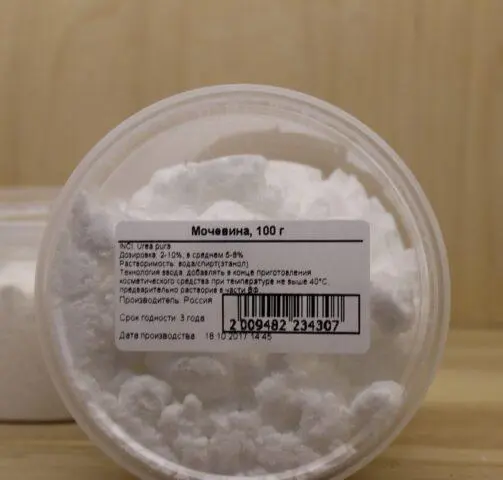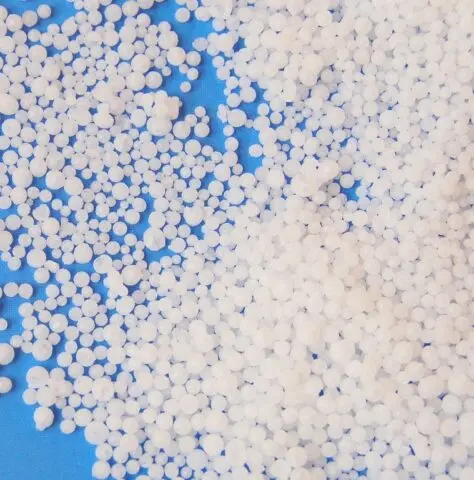Contents
You need to feed onions with urea in early spring and early summer. The tool is used as a source of nitrogen. It is absorbed by plants gradually, which ensures uniform saturation. The tool is inexpensive and quite effective. Allows not only to increase productivity, but also to protect the plant from fungal infections.
Is it possible to feed onions with urea in the spring
Most varieties of onions are undemanding to growing conditions. Compared to tomatoes, cucumbers, peppers and other crops, they do not need regular fertilization. However, during April and May, the onion should actively grow. Growth processes are provided by nitrogen, which is part of proteins.
In case of its lack, the bow begins to lag behind in development, which is noticeable by visual signs:
- weak and short arrows;
- pale or even yellow tops;
- death of the tips of the foliage, and then the main part;
- root crops decrease in size and ripen ahead of time.
Therefore, in spring, the onion needs top dressing, which can be obtained from urea. This is especially important for depleted soils. If fertilizer is not applied, a number of adverse consequences will occur:
- plants will develop poorly;
- yield will decrease.
- onions due to a lack of urea will be weak, may suffer from diseases and pests, temperature changes and other harmful factors;
- there will not be so much greenery, it will begin to fade quickly.
Pros and cons of using urea for onions
Urea (carbamide or carbonic acid amide) is an organic fertilizer, a source of well-assimilated nitrogen. Chemical formula of substance CH4N2O. Released in the form of white or transparent granules, odorless and highly soluble in water. Also, urea is produced in the form of tablets in a special shell, which allows the main component to dissolve as long as possible and evenly provide the soil with nitrogen.

Urea is produced in the form of granules and powder.
Pros:
- Nitrogen is absorbed by plants gradually. The soil is saturated evenly, so growth is maintained throughout the season.
- Unlike inorganic nitrogen sources (such as ammonium nitrate), urea does not cause leaf burns. Therefore, it can be used for foliar top dressing.
- The substance is rich in nitrogen – a mass fraction of 48%, this is quite enough for all plants in the garden.
- Provides a quick set of green mass, contributes to a good yield of root crops, increases the immunity of onions to bad weather, pests and diseases.
- The composition can be used on any type of soil, including acidic and light (sandy).
- It is well retained by the soil, almost not washed out by melt water and precipitation.
- Top dressing is universal, suitable for all types and varieties of crops, including demanding ones, for example, red Yalta, white, shallots and others.
There are not so many disadvantages of urea, but they must also be taken into account.
Cons:
- If the onion fades and needs urgent replenishment of nitrogen deficiency, it is better to feed with any kind of saltpeter, since the substance is absorbed from urea for a rather long time.
- It is necessary to store the drug in conditions of low humidity, since the granules absorb water well.
- The concentration must be observed, because due to an overdose, the onion can get burned, besides, it will go green, and the root crops themselves will remain small.
When to treat onions with urea
To get a good harvest, you need to follow the timing of the introduction of nutrients. Top dressing of onions using urea is carried out several times per season:
- On the eve of sowing (3-4 weeks before). Granules are applied to the soil in the amount of 5-10 g per 1 m2. At the same time, the embedment depth should be 4-5 cm so that the released ammonia does not evaporate, but passes into nitrogen compounds.
- Directly at sowing, top dressing is applied if this has not been done in advance. The quantity is the same – 5-10 g per square meter. In this case, the onion seeds and the preparation itself must be separated by a layer of soil 4-5 cm, otherwise chemical burns are inevitable. Along with the main top dressing, it is recommended to close up superphosphate in the amount of 20 g per 1 m2.
- When the onion feathers reach 8-10 cm in height, a new top dressing is applied in the amount of 15 g per 1 m². It is at this stage that plants need a large amount of nitrogen for further growth.

- Two weeks later (no later than the second half of June), foliar top dressing can be given by dissolving 10 g in 10 liters of water. The liquid is poured into the sprayer and plantings are processed in the late evening or early morning.
The granules are embedded in the soil immediately after the surface layer has thawed and the melt water has drained (beginning of April). Quantity – 10 g per square meter.
How to process onions in the spring with urea
Processing is carried out in two ways – root (watering under the root) and foliar (spraying the aerial part). To do this, it is necessary to prepare a weak solution, carefully observing the proportions. It is better to water and spray the plants in the late evening or early morning.
Feeding onions with urea
The main method of applying top dressing is root (watering onions). To prepare the solution you need:
- Measure the right amount (5-10 g).
- Dissolve first in a small volume of settled water at room temperature.
- Then bring to a total volume of 10 liters (standard bucket).
- Gently pour under the root, trying not to get on the green part.
Measurements are best done using scales or buying a powder with a pre-measured mass, for example, packaging of 10 g. You can also use household appliances:
- 1 glass with a volume of 200 ml holds 130 g of the product;
- 1 match powder – 15 g;
- tablespoon – 10 g;
- teaspoon – 5 g.

To feed onions, 5-10 g of the product is dissolved in 10 liters of water.
When applying in early spring (on the eve of planting), you can simply sprinkle the granules in the right amount per square meter. Then they are covered with a small layer of soil. Watering is not necessary, because after the snow has melted the soil has not yet had time to thaw. If it is already dry, after a few days they give a bucket of water for every square meter.
They help increase yields, as well as increase plant immunity and resistance to adverse weather conditions.
Pest control
Urea is used not only for feeding onions, but also as a pest control agent. It helps to cope with such diseases: downy mildew, powdery mildew, scab, purple spotting.
In this case, the solution should be as concentrated as possible – about 40-50 g per 10 liters. Processing is carried out in those cases when the leaves are covered with a grayish or whitish coating, extraneous spots, and begin to fade. Also in April, you can carry out preventive spraying.
Healthy plantings are treated with more powerful means, for example, Bordeaux mixture, Fundazol, Skorom, Tattu and other fungicides.
Safety measures
Urea is a fairly effective top dressing for onions. But its use requires certain precautions:
- The use of the indicated dosages is usually not more than 15 g per 10 liters.
- Compliance with the frequency and multiplicity – no more than three treatments are carried out per season with an interval of 3-4 weeks.
- The last time top dressing is applied no later than the second half of June, since in summer the plant needs more not nitrogen, but potassium and phosphorus.
- During work, you need to wear gloves and a mask, do not be distracted by conversations, eating. Keep children out of the area.
- The solution is not stored for a long time – it is prepared in an amount that can be used at a time.
- The urea itself (granules for feeding onions) is stored at a temperature of -11 to +30 degrees in conditions of reduced humidity (up to 50%).

It is better to work with the powder with gloves
Conclusion
You can feed onions with urea only in the middle, at the end of spring and at the beginning of summer. It is at this time that the plant needs the intake of nitrogen compounds. The tool provides rapid growth, good yield and prevention of dangerous infections.










